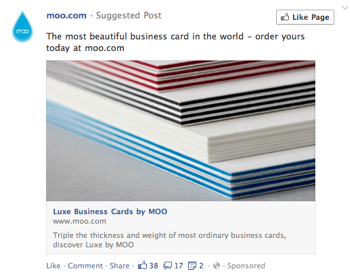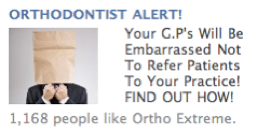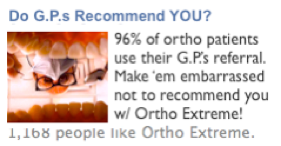When it really comes down to selling product — or selling anything for that matter — nothing beats demonstrability.
If you can demonstrate the products benefits so people can see it in action with their own two eyes, you’ve got persuasive magic on your hand. And that’s really the key to just about every infomercial:
- You watch the Ginsu knife slice through the tin can and then slide through the tomato like butter,
- You see the OxiClean lifting up stains like magic,
- You observe the Slap Chop mincing veggies and nuts with only two or three chops.
In fact, the king of the modern infomercial, Billy Mays, insisted on demonstrability for any and every product, and that’s why he often went to sometimes silly extremes to show-off the product. Stuff like, pulling a freaking age-of-sail warship with two canoe paddles that have been Super-Puttied together, simply to show the bonding strength of the putty.
So what does this have to do with Facebook Ads?
Simply that products with a visual sense of demonstrability are more easily advertised on Facebook. One example might be these Moo Lux business cards:
The super thick sides with the color band make a huge impression, right?
The product is visually interesting enough to force readers to find out what they’re actually looking at. And when they find out it’s business cards, there’s no longer any question that these cards are utterly unique and luxurious. And, gee, don’t you wonder what the front of the cards look like? Better click-through to the landing page…
And that’s what makes visually demonstrable products so compelling on Facebook. Here’s another example:
So you may not be interested in buying a shiny silver “Disco Tuxedo” but there’s not doubt that it’s a visually demonstrable product. Take one look and you know exactly what’s being pitched and why it’s so unique and (potentially) appealing.
If you really want to stand out at a party, this is the way to go, folks.
But most products are neither totally visually demonstrable nor totally intangible; they’re somewhere in between. And that’s when proper photo selection makes the difference.
For example, take marketing for orthodontists. Orthodontistry itself could be quite visual, right? What’s more visual than a radiant smile? Especially if it’s a before and after between crooked teeth and gorgeous smile. But marketing for orthodontists? That’s a bit harder, isn’t it.
So here’s how not to do it:
Yes, the paper bag over the head gag might grab a bit of attention, but it’s hardly emotional or demonstrable.
In other words, this ad’s image has basically just given up on the challenge altogether.
And here’s what it looks like when the advertiser pushes as hard as possible to make the ad image interesting and demonstrable of the service:
If the question is: are you getting the dentists’ referrals that you deserve, this picture demonstrates just how important that is.
Because if you’re a patient in the vulnerable position pictured, you know exactly how much stock you put into the dentists recommendations. Which means that if the dentist refers the patient to another orthodontist, then every competing orthodontist has just lost that patient’s business.
But what if a picture just won’t do it justice?
That’s when you should think video, and then think in terms of a suggested post ad. Because even when your service might not be demonstrable in a still photo, it generally will be in video. And if the service itself isn’t, the happiness of clients and the before and after effects ought to be.
And I know I’ve used this video as an example before, but I think it speaks for itself: how can you demonstrate a products ability to block out stinky smells either in pictures or video?
Take a look at the classic Blendtec commercial:
Now that’s what I call a demonstration!
Yes, I admit, that video costs more than photos. But the most expensive ad is the one that doesn’t work. If you need video to make your product demonstrable, then paying a bit more for a video ad that works is actually quite a bit more cost effective than the alternative.
So what’s it going to be: are you going to put the extra effort in to make your ad demonstrable, or will you settle for underperforming Facebook Ads?









